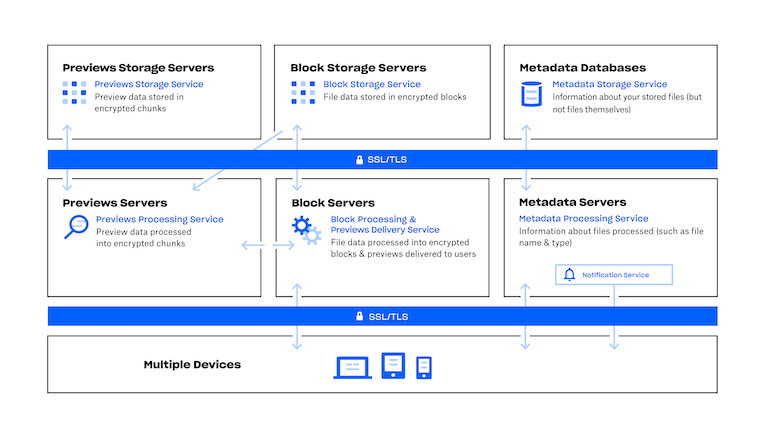Thanks for getting back to me Prasanth; how are you today?
I'll try to address your questions here but please feel free to also check our security whitepaper as most of your concerns are addressed within that document.
To cut to the chase now, note that (1) the actual contents of users’ files are stored in encrypted blocks with the Block Storage Servers while prior to transmission, the Dropbox client splits files into file blocks in preparation for the storage. The Block Storage Servers act as a Content-Addressable Storage (CAS) system, with each individual encrypted file block retrieved based on its hash value.
And (2) File metadata is stored in a MySQL-backed database service, and is sharded and replicated as needed to meet performance and high availability requirements.
And to further elaborate, file blocks are stored in one of two systems: Amazon Web Services (AWS) or Magic Pocket, our in-house storage system. Magic Pocket consists of both proprietary software and hardware and has been designed from the ground up to be reliable and secure. In both Magic Pocket and AWS, file blocks are encrypted at rest, and both systems meet high standards for reliability.
I hope this information helps and we're always around if you have any additional queries; just give us a nudge here prasanthkp!

